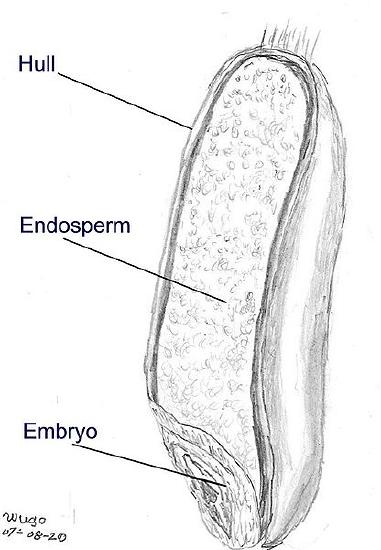5.5: Celiac Disease and Gluten
- Page ID
- 20993
1 out of every 133 people in the United States has celiac disease1. People with celiac disease cannot consume the protein gluten because it causes their body to generate an autoimmune response (immune cells attack the body's own cells) that causes damage to the villi in the intestine, as shown below.

This damage to the villi impairs the absorption of macronutrients and micronutrients from food. There are a variety of symptoms for celiac disease that vary depending on age and from person-to-person.
What is gluten?
Gluten is a protein that is bound to starch in the endosperm of grains such as:
- Wheat
- Barley
- Rye
- Triticale

Gluten-free diets have been increasing in popularity even for people who do not have celiac disease. The thinking among those consuming these diets is that they might be non-celiac, gluten-sensitive, meaning that they experience adverse effects from consuming it. However, some studies suggest that fermentable oligosaccharides, disaccharides, monosaccharides and polyols (FODMAPs) like fructan, a fructooligosaccharide, might be the cause of these issues as found in the research described in the abstract below. Low FODMAP diets are increasing in use for similar reasons as gluten-free diets were used. Another study found in the second link below has found that FODMAP consumption was associated with significantly more symptoms than gluten consumption in individuals with IBS. As a result the term non-celiac wheat sensitivity is being used now more to reflect that there may be multiple compounds in wheat and other foods that may lead to symptoms that have been attributed to gluten alone as described in the review found in the third link.
Fructan, Rather Than Gluten, Induces Symptoms in Patients With Self-Reported Non-Celiac Gluten Sensitivity
FODMAPs or gluten as inducers of symptoms in irritable bowel syndrome: separating the wheat from the chaff
Non-celiac wheat sensitivity: rationality and irrationality of a gluten-free diet in individuals affected with non-celiac disease: a review
References
- http://www.celiac.org/
- en.Wikipedia.org/wiki/File:Coeliac_Disease.png
- en.Wikipedia.org/wiki/File:Wheat_seed.jpg


